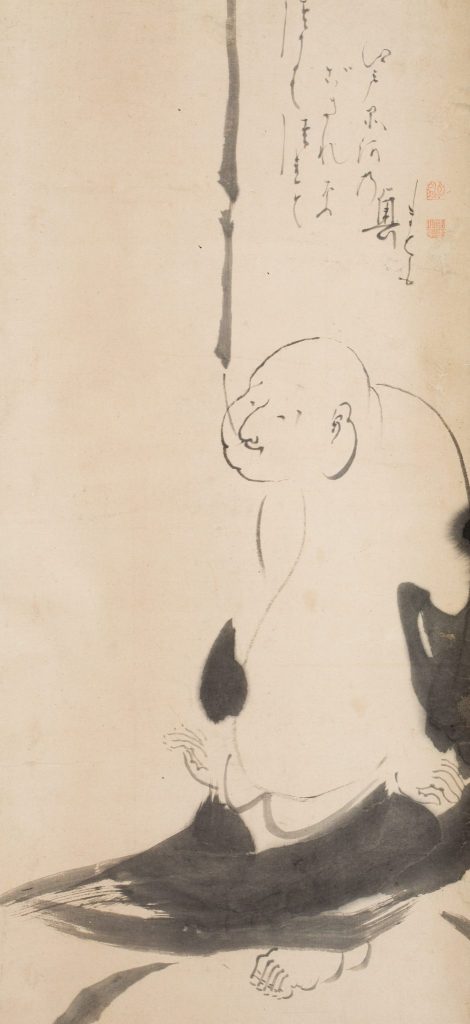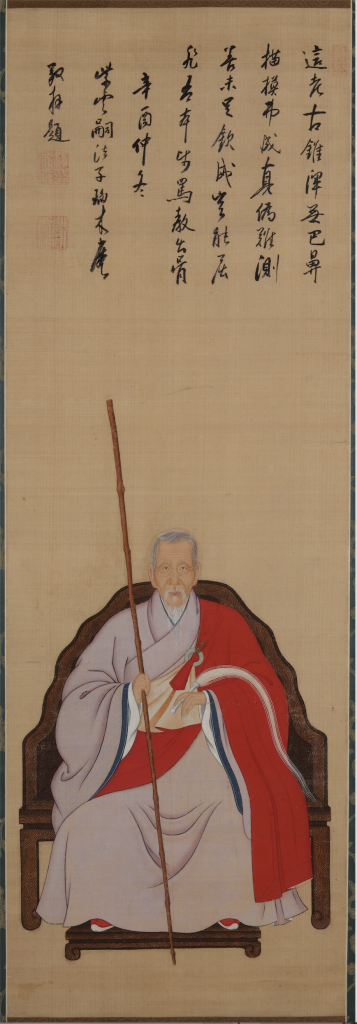
Painting and calligraphy by Zen monks has a long history in Japan. Introduced from China in the twefth century, Zen (meaning “meditation”) has its origins in the teachings of the Buddha, the sixth-century BCE Indian prince who taught that it was possible to be freed from suffering and the cycles of rebirth.
The paintings and works of calligraphy on view were created by Zen masters during the Edo period (1615–1868). The most influential of these, Hakuin Ekaku (168–1769), is credited with creating a new visual language for Zen, by dramatically expanding its subjects and themes to include Shinto gods, Confucian maxims, Japanese legend, folklore, and scenes from everyday life. Hakuin’s immediate followers, along with later generations of Zen masters, have drawn on this rich visual vocabulary to the present day.

Hotei in the Guise of a Street Performer, mid-18th c.
Hakuin Ekaku (1686–1768)
Ink on paper
Museum purchase: Asian Art De-Accession Fund

Daruma Looking Right
Nakahara Nantenbo (1839–1925)
Ink on paper
Gift of Kurt A. Gitter, M.D. and Alice Rae Yelen

Procession of Monks
Kogan Gengei (1747-1821)
Ink on paper
Museum purchase

Portrait of Ingen
1611–1684
Unidentified
Ink and color on silk
Gift of Kurt A. Gitter, MD, and Millie H. Gitter in memory of N. V. Hammer